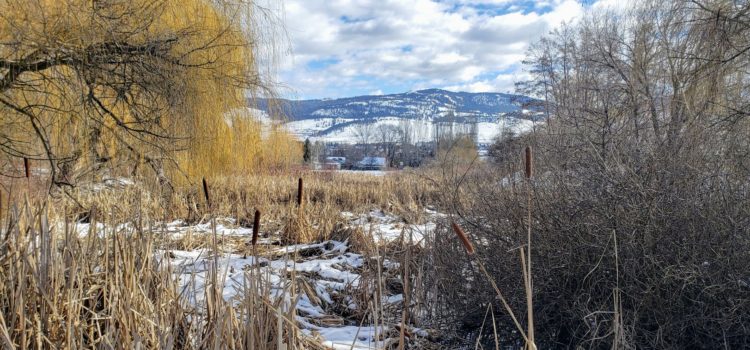
Kelowna Parks Challenge – Trip #26
This week, as part of my Kelowna Parks Challenge, I explored four parks in and around Rutland. Starting at one of the area’s low points, Chichester Wetlands, I eventually travelled up three hundred metres in elevation to the new neighbourhood of Tower Ranch.
Read on for my impressions and reflections!
The Trip
While I didn’t restrict myself to one neighbourhood this week, I did visit both ends of one creek. Bauer Brook starts out as an ephemeral stream in Tower Ranch, where Campbell Brook and Industrial Creek meet. After coming down out of the hills and meandering through farmland, it joins up with Gopher Creek in the Chichester Wetlands to become Francis Brook. Together, their waters all flow northwest to join up with Mill Creek.
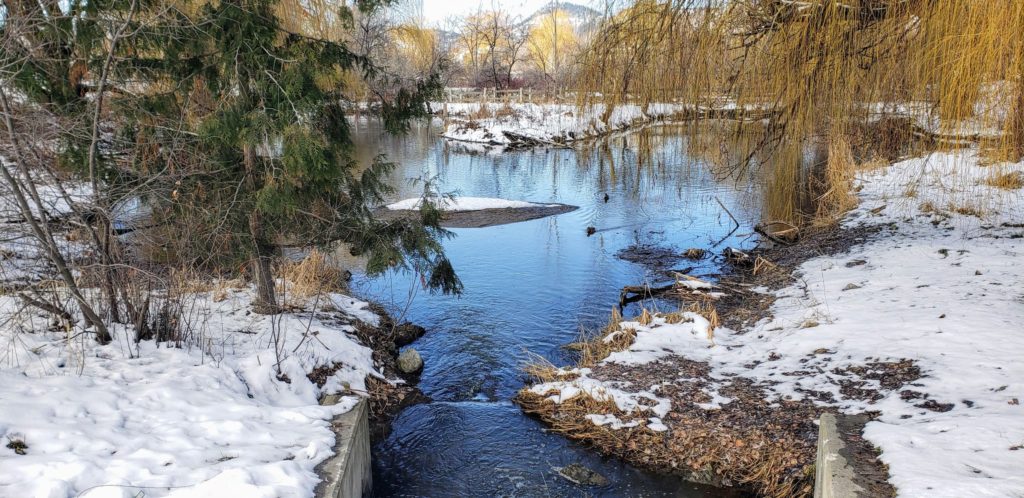
At both ends of the creek, I found myself in residential developments, created several decades apart. Down in Rutland, the houses were mostly built in the seventies and eighties, as they were in the other northern Rutland neighbourhoods I visited to the east. Tower Ranch, however, is a brand new neighbourhood that is still under construction. With its streets drawn in sinuous lines that follow the local topography, its most interesting feature, perhaps, is the golf course that is being interwoven with the housing. Up in Tower Ranch, nearly everyone has a fairway in their backyard.
Chichester Wetlands Park

This park is an excellent nature sanctuary in the middle of an otherwise suburban neighbourhood. Comprising a formerly natural marsh, a large pond was created here many decades ago to manage the excess water that was being routed through the storm sewers of eastern Rutland. Today, the wetland habitat is well-used by ducks and other birdlife, while the paths around the ponds are well-used by people walking their dogs, toddlers, or selves.
This park has a lot of paths and benches, but not a playground or picnic table. Those can be found in Harris Park which borders the wetlands on the north side.
Washrooms and Drinking Fountains: There is no drinking fountain in this park. There is no washroom in this park.
Dog Rules: Dogs are allowed in this park, but only on-leash and on the trails.
Harris Park
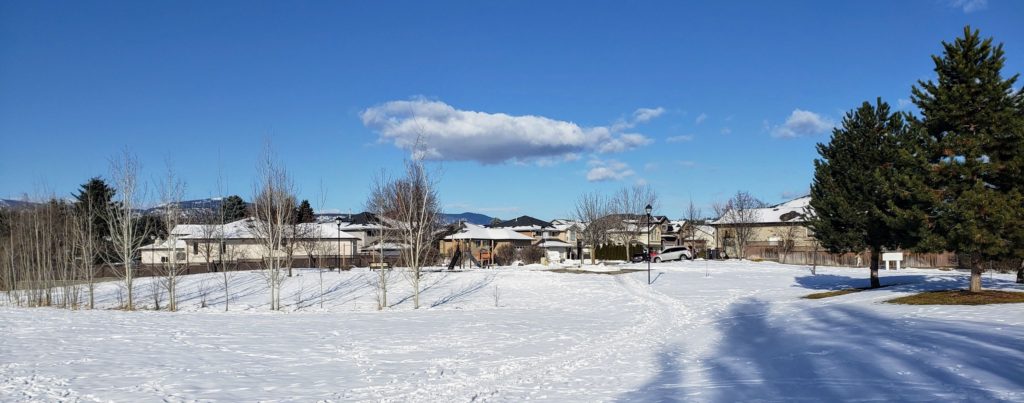
This is a lovely neighbourhood park whose main attraction is that it is seamlessly attached to the adjacent Chichester Wetlands. With its connection to Harris Court and Hillaby Court, this park provides local residents with valuable access to the wider wetland park.
Most of this park is taken up by a relatively new playground and a walkway around it. The border with the wetlands is marked by a line of birch trees. Due to its distance from major streets and its connection to a natural space, this is a wonderfully protected place to bring your children to play.
Washrooms and Drinking Fountains: There is no drinking fountain in this park. There is no washroom in this park.
Dog Rules: Dogs are allowed in this park, but only on-leash and on the paths. Dogs are not allowed near the playground.
Hartman Park
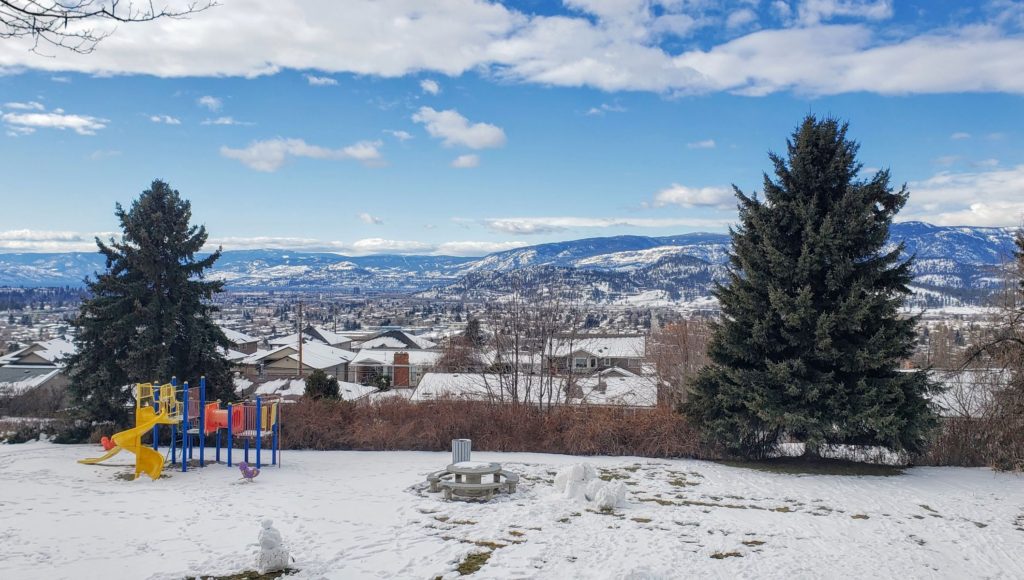
This neighbourhood park, in a residential neighbourhood on the slopes outside of Rutland proper, is distinguished by an amazing view. From this park, you can look west across Rutland and Kelowna to West Kelowna on the other side of the lake. It is worth a visit for the view alone.
As a neighbourhood park, it also has a children’s playground, a picnic table, and a certain amount of lawn. During my visit, I also noticed the park’s significant slope had been well-used for sledding.
Washrooms and Drinking Fountains: There is no drinking fountain in this park. There is no washroom in this park.
Dog Rules: Because this park has a playground and no trails, dogs are not allowed in this park.
Tower Ranch Hillside Park
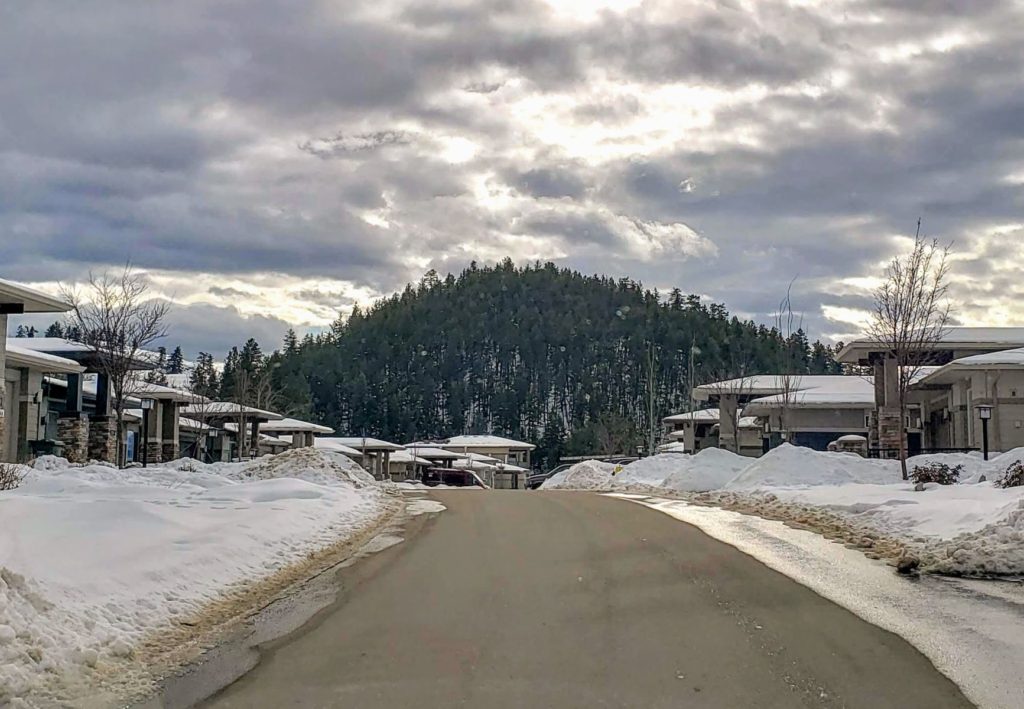
This new park protects a hitherto undeveloped hilltop on the south side of the new Tower Ranch neighbourhood. Since the banners on the nearby streets read: ‘Golf Hike Relax’, it is likely the park is being developed as part of the neighbourhood, as a lifestyle inducement to potential buyers.
Though city maps show a couple of trails on the hill, the current construction meant that I was not able to access any of them. The one trailhead I got near had a barrier with a sign that reads “No Public Access. Trail Under Construction.”
I look forward to monitoring the development of this park. To the south, it shares a border with the new Black Mountain Regional Park, which is scheduled to open this year. The first trail loop was built in that park last year and I believe the two parks will eventually be connected.
Washrooms and Drinking Fountains: There is no drinking fountain in this park. There is no washroom in this park.
Dog Rules: Dogs are allowed in this park, but only on-leash and on the trails.
Reflections
Wetlands
This week’s adventure gave me another opportunity to reflect on the ways Kelowna’s precious wetlands have been preserved (or not) over the years and how they are being treated these days.
In Chichester Wetlands Park, we see an infrastructure project that worked with the natural features of the landscape, but in a less sensitive way than many modern projects do. Particularly, the way the sides of the retention pond were drawn not just at a right angle to each other but parallel to the local street grid, as well as the use of conventional weeping willows at regular intervals to stabilize the bank, points to a landscape design that had civic function as its cardinal value rather than ecosystemic considerations.

In Tower Ranch, currently under construction, we see more modern sensibilities at work. Just as we saw in Wilden, a conservationist mindset has led the subdividers to respect the natural topography, laying streets along ridgelines, which creates views for residents, while leaving gullies and ravines as corridors for wildlife. In this neighbourhood, however, instead of leaving those corridors alone, as true wildlife sanctuaries, the developers have filled them with a golf course, as though one type of parkland were equivalent to any other.
Reading the City of Kelowna’s Sensitive Habitat Inventory, it is clear that every wetland ecosystem left inside the city limits is unimaginably precious, including ephemeral watercourses, such as those within the Tower Ranch development. That development, nevertheless, shows much progress over the mid-century designs we see in older parts of the city. It will be interesting to see what more can be saved from the inevitable developments of the future.
Hillside Development
Once again, in Tower Ranch, we see a new development on a hillside, just outside of town. As we saw in Wilden, and will see again in the Ponds and Kettle Valley, many new neighbourhoods are being built on hills on the edge of town. These neighbourhoods provide amazing views, but necessitate a car-dependent lifestyle, which, studies show, most Kelowna Residents have anyway.
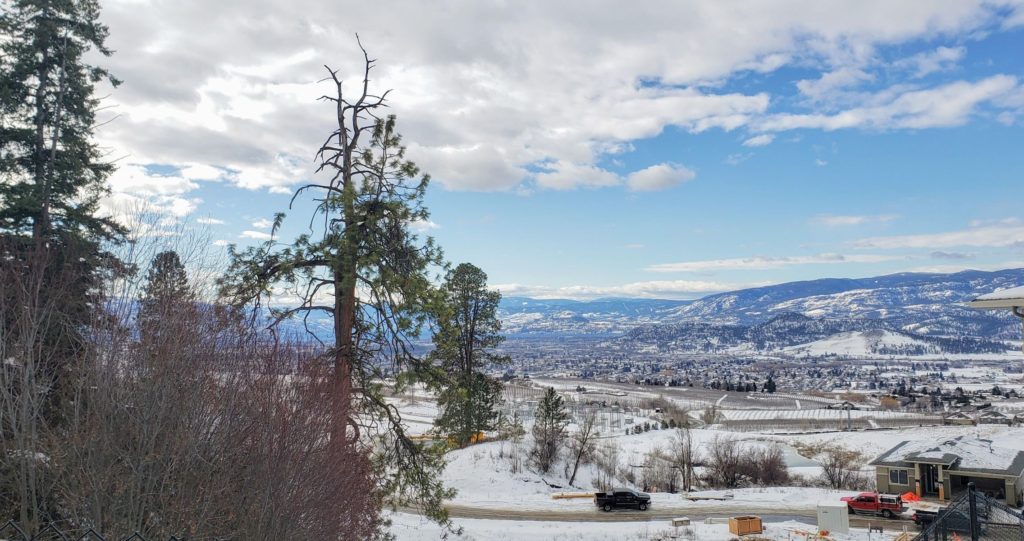
The city is not going to allow any more of these developments after those already promised have been built, but it is clear why they have been so popular. The valley bottom and lakeshore area, where Kelowna got its start, has long been built up. With much of the remaining valley bottom and adjacent grassland protected as part of the Agricultural Land Reserve, the hillsides are about all the room that’s left for outward expansion. The solution, of course, is density: to grow up, rather than out, but that’s not what this phenomenon has made me think about this week.
Though it pains me to see precious grassland ecosystems sacrificed for human residences, would it not have pained me equally to see the riparian ecosystems of the Mill Creek delta cleared a century ago? Perhaps more so, since the biodiversity of a riparian ecosystem often exceeds that of a grassland.
Ultimately, people have to live somewhere. This week my conclusion is that the important thing to consider is an ecosystem’s human carrying capacity. Whether a lowland or an upland, every ecosystem can accommodate some number of human residents, though some can undoubtedly accommodate more than others. The important thing right now is to accept that the current capacity of rare ecosystems of regional significance is zero.
Conclusion
This week I saw four parks, which keeps me on pace. Including them, I have now seen one hundred and ten parks in two hundred and five days or 54% of the parks in 56% of the year. I still have some catching up to do, but I’m not worried about it yet.
It’s February now and I can feel the spring trying to push the winter out. Temperatures are consistently above zero in the day, now, and as long as it doesn’t snow anymore, it won’t be long before all the ground is exposed. Of course, once the snow melts there will be rushing creeks everywhere, which is fun to view but can lead to flooding. All in all, it leads to an increase in exciting options as to where to walk next.
I hope you enjoyed this travelogue and I hope you read my next one, wherever it might take me!

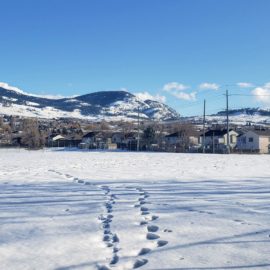

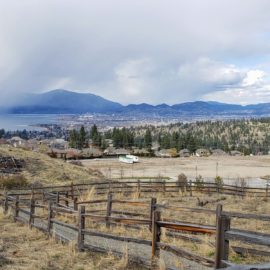
A friend and I have decided to follow your footsteps this year as our challenge.
Thanks for this!! You do an amazing job of giving historical and environmental context to the places and land you visit.
I also came from the lower mainland, and I find your walks and your blogs enriching–they make me notice and appreciate Kelowna more! Kelly
Thanks for your kind words, Kelly!
I’m glad you’re able to get from my blogs the same benefits I got by writing them.